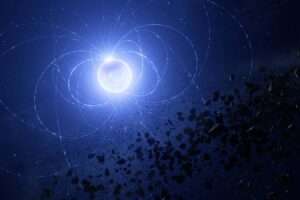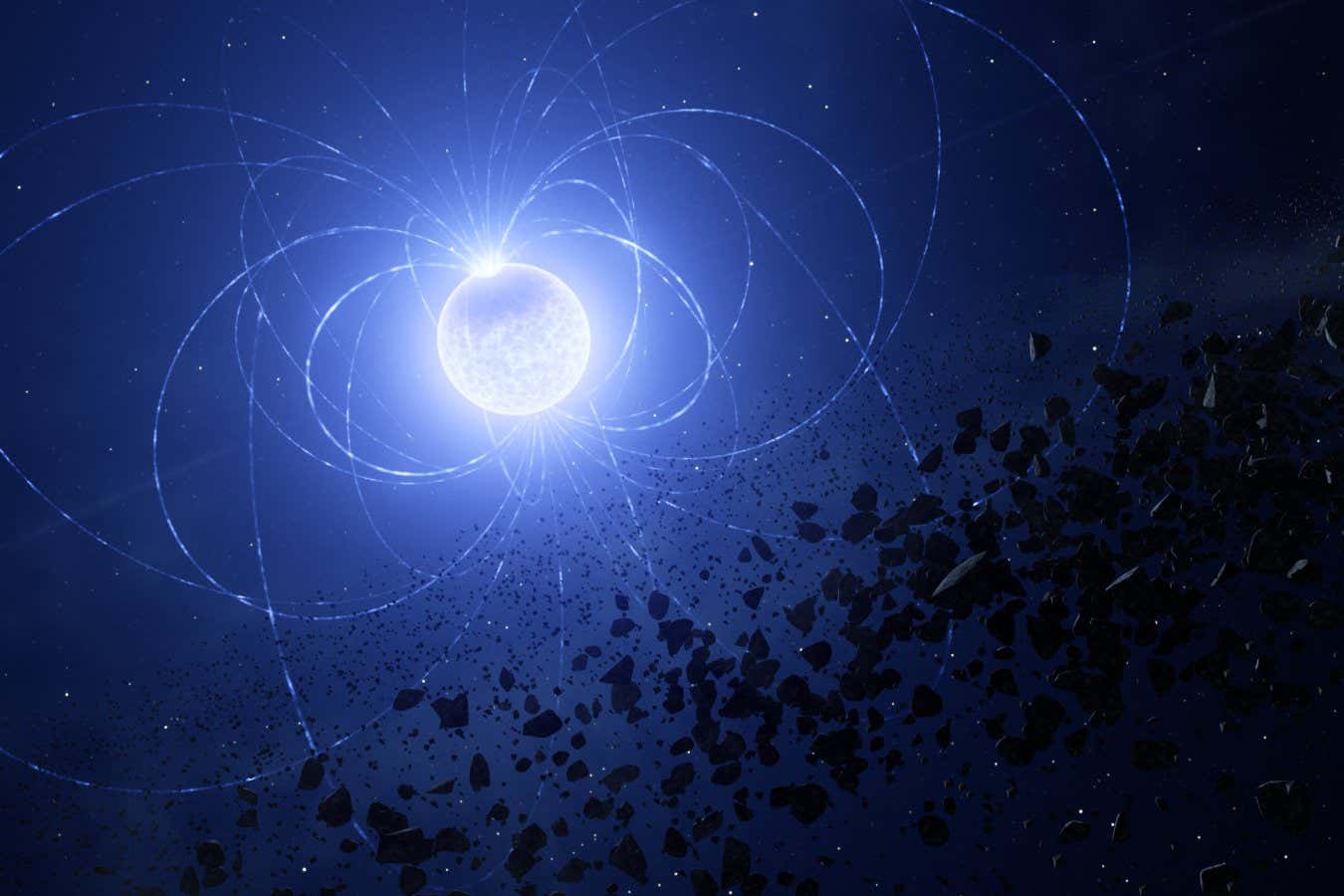Just imagine a mysterious star, similar to the Sun, coming nearer to the end of its life and swallowing the planets and asteroids that were formed alongside it. This fascinating cosmic event has been observed for the first time using the European Southern Observatory’s Very Large Telescope in Chile. The evidence? A unique ‘scar’ on the surface of a white dwarf star, as reported in The Astrophysical Journal Letters.

Table of Contents
-
The Cosmic Detective Mission
-
Mysterious White Dwarfs and Their Appetite
-
The Magnetic Clue
-
A Concentration of Metals
-
Unprecedented Phenomenon
-
Conclusion: Cosmic Sleuths at Work
The Cosmic Detective Mission
A group of astronomers, armed with their trusty “Swiss-army knife” instrument called FORS2 (which sounds like something James Bond would use), embarked on this cosmic detective mission. Their target? A distant star with a mysterious full metal scar.
Now, this scar wasn’t from a galactic bar fight; it was a clue. Using FORS2, they carefully examined the star’s magnetic field and connected the dots. Imagine them huddled around their screens, saying, “Aha! It all makes sense now!”
Mysterious White Dwarfs and Their Appetite
White dwarfs, the slowly cooling remnants of stars like our Sun, are known to devour parts of their planetary systems. But this study, led by Stefano Bagnulo from Armagh Observatory and Planetarium in Northern Ireland, UK, reveals a new twist. The magnetic field of the star is the main player during this process, leaving a distinct mark on the white dwarf’s surface.
The Magnetic Clue
Astronomers discovered a concentration of metals on the surface of the white dwarf WD 0816-310, an Earth-sized leftover of a star slightly larger than our Sun. According to Professor Jay Farihi at University College London, these metals might come from a planetary fragment as big as, or possibly bigger than, Vesta—the second-largest asteroid in our Solar System, measuring about 500 kilometers in diameter. This discovery enhances our understanding of the cosmic star’s life cycle and its planetary system. The Astrophysical Journal Letters, published the report
A Concentration of Metals
Contrary to theoretical predictions, the material was not uniformly distributed across the star’s surface. Instead, the scar is a concentrated area of planetary material. This material is held in place by the same magnetic field that directed the falling fragments. Co-author John Landstreet, a professor at Western University, Canada, and an affiliate of the Armagh Observatory and Planetarium, notes that this phenomenon is unprecedented.
Conclusion: Cosmic Sleuths at Work
There’s more! These cosmic sleuths dug into the archives, pulling out data from another instrument called X-shooter (no, it’s not a DJ). With help of this add-on proof, they finalized their findings.
So, next time you look up at the night sky, remember that behind those twinkling stars lies a world of scientific intrigue, magnetic scars, and astronomers wielding Swiss-army knives.
